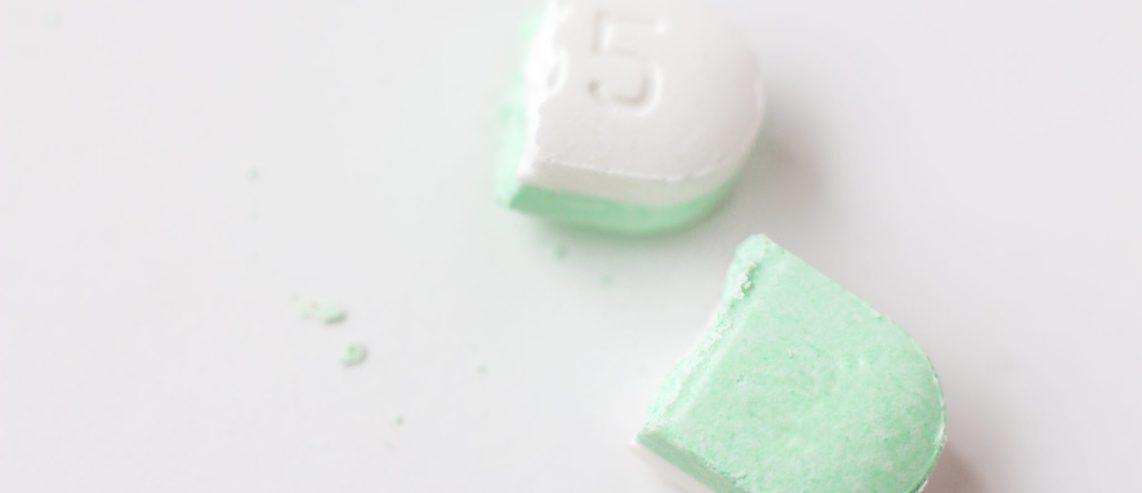Splitting pills is a common practice some people use to save money on prescription medication.
If different doses of a medication have the same cost, you may save money by getting a higher dose and cutting it in half. For example, you may need to take 25 mg of a drug but the cost for a 30-day supply of 50 mg is the same. So, cutting the tablets in half and filling your prescription every other month would save you money.
Some people also try to stretch their supply of their medication by cutting the dose they need to take in half. In this case, they save money but they don’t get the dose they actually need.
Sometimes pill splitting is a short-term solution. This may happen if you may need a short-term change to the dose of your medication. To achieve the right amount, your doctor may recommend you split your pills.
Your doctor may also recommend splitting pills if you need a smaller dose than the medication comes in. They might also suggest this if the dose you need isn’t available.
But there’s a right way and a wrong way to split pills. And not all pills are safe to split. Here’s what you should know before you split your pills.
How Can You Tell If Your Pills Are Safe to Split?
It’s safe to split a particular medication if the U.S. Food and Drug Administration (FDA) has approved it for splitting. Here’s how to know if the FDA approves a medication for splitting:
- You’ll find the FDA approval to split printed in the “HOW SUPPLIED” section of medication printout and package insert. This is the paperwork you’ll get from the pharmacist when you pick up your prescription.
- The tablet will have a score mark, or indention, where you should split it.
If you’re unsure or have any questions, ask your pharmacist or health care provider.
According to SafeMedication.com, you should never split the following:
- Anti-seizure medication.
- Blood thinners.
- Combination medications that contain more than one active ingredient.
- Chemotherapy medications.
- Contraceptives.
Never Miss a Beat!
Subscribe to Our HealthBeat Newsletter!
Thank you for subscribing!
You can now select the specific newsletters you'd like to receive.
You are already subscribed.
Subscribe to more newsletters in our email preference center.
Sorry, an error occurred. Please try again later.
Get Healthy Tips Sent to Your Phone!
Why Is It Unsafe to Split Some Pills?
If the FDA approval to split isn’t on the medication printout or insert, it’s not safe to split. That’s true even if the medication appears to have a score mark. Splitting the medication could mean:
- Each split side may not be the same weight after splitting. You may take more or less of the medication than you need.
- The drug content in the split halves may not be the same.
- The split drug may not work in your body the same way as the whole tablet.
Your medication dosage helps you control health symptoms and keep health conditions from getting worse. If you’re splitting pills to save money, you may end up taking less than the amount prescribed. Taking less medicine than you need can affect your physical and mental health.
If your medication has a special enteric coating to prevent stomach upset, you shouldn’t split these pills. Doing so means the full coating is no longer there to protect your stomach.
Most sustained, controlled, or timed-release medications are not meant for splitting, according to the FDA. If they are, the medication printout or insert will say so.
Other than these, a recent systematic review found that you can split many pills without much concern for safety or how well they work.
How to Cut a Pill in Half
Before you split any medication, get the approval of your doctor or pharmacist first. There may be other reasons you shouldn’t split your medication. If your doctor or pharmacist says it’s okay for you to split your pills, follow these steps.
- Use a special tool known as a pill splitter or pill cutter. A pill cutter helps you split your pill evenly and cleanly. You can buy a pill cutter at your local pharmacy or online.
- Never use a knife or scissors to split your pills. Using a knife or scissors will not give you an even cut or may crush your pills. You also risk injuring yourself.
- Only split one pill at a time. Trying to cut more than one pill at once can leave each half uneven.
- Only split the pill you need to use for that day. Don’t split your entire supply of tablets. Temperature, heat, and humidity can affect the efficacy of your split pills.
- Don’t crush or chew tablets that you split unless your doctor says it’s safe to do so.
- If you switch from one brand name to another or to a generic, doublecheck if it’s splitable. The same medications sometimes are manufactured differently. So even if you could split your old tablets, you may not be able to split these new ones.
How Else Can You Save Money on Medications?
If it’s not safe to split your pills, talk to your doctor if you can’t afford taking them. They can often switch you to a generic version of the medication. Generic medications work the same as the brand name drug, but they often cost much less.
Your doctor may also have office samples or manufacturer coupons they can provide. It’s also worth talking to your pharmacist. They may also have manufacturer coupons or other ways you can save money, such as cash back rewards card.
Sources
About UPMC
Headquartered in Pittsburgh, UPMC is a world-renowned health care provider and insurer. We operate 40 hospitals and 800 doctors’ offices and outpatient centers, with locations throughout Pennsylvania, Maryland, New York, West Virginia, and internationally. We employ 4,900 physicians, and we are leaders in clinical care, groundbreaking research, and treatment breakthroughs. U.S. News & World Report consistently ranks UPMC Presbyterian Shadyside as one of the nation’s best hospitals in many specialties and ranks UPMC Children’s Hospital of Pittsburgh on its Honor Roll of America’s Best Children’s Hospitals. We are dedicated to providing Life Changing Medicine to our communities.

